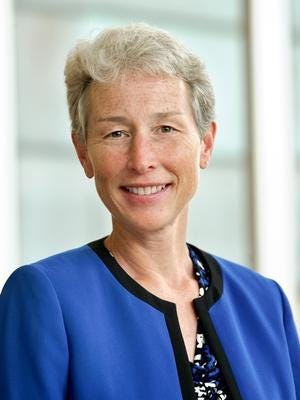
On Thursday, Feb. 28, Professor Ann Owen of the Economics Department presented a Levitt Center talk entitled, “Women in Economics & Stem: Why are they underrepresented and does it matter?” This lecture, held on the 100th anniversary of the College of William & Mary accepting women into its student body, focused on recent research into the causes and consequences of underrepresentation.
Owen challenged traditional research and conclusions regarding the lack of women in economics and STEM fields, attributing this issue in part to devaluating bias. She pointed out the ways in which economic models are over-simplified, citing the “perfect competition model,” where prices are tied solely to their behavior and demand. This model, she said, fails to include arbitrarily manipulated prices, making it impossible to have nuanced articles on issues like the gender pay gap and potentially alienating female students.
After outlining these initial critiques, Owen focused on behavioral and psychological data, such as the culture of male-dominated business and tech environments. She said that because our culture perceives brilliance as a largely male-dominated trait, women are generally held to higher levels of scrutiny.
She also mentioned the “vicious cycle” of underrepresentation. As women are expected to have different goals than men in higher education, less of them focus on business and STEM, creating fewer role models and feeding into the idea that these fields are not for women.
Owen also brought up more specific research from the Economics Department at Hamilton. Studies show women are more likely to declare an economics major if they receive an “A” in one of the introductory courses; there is no similar increase for men.
Owen attributed this finding to variations in grade sensitivity, which relates to psychological research. Men are raised to be more confident in their abilities, while women are prepared to respond to external symbols like grades, enhancing the effect an early score has on perceived ability.
Underrepresentation is also seen in unequal hiring practices. Owen described instances of unconscious bias in hiring, citing research that shows different descriptive patterns for men and women. For example, in identical job applications, the one with a more masculine name was more likely to garner a response.
Owen also cited research that gender-blind hiring practices for orchestras increased women’s chances by 20–30 percent. She concluded that these findings demonstrated unequal expectations for men and women, which cannot be analyzed in a purely economic framework.
Owen ended her talk with a discussion on the adverse impact of bias. She said it is most important to combat underrepresentation in all fields in order to narrow the gender wage gap. As STEM research productivity goes down, there is a greater need for quality researchers in the field, which requires an increase in representation of women.
Women also tend to have different perspectives than the current male majority in these fields, allowing research to move in different directions. In a more general sense, diverse groups are generally better at problem solving, have higher morale, and detect biases more effectively.
In order to challenge the current hegemony, Owen encouraged women going into business and STEM to change their mindsets. Rather than ignore biases, they should call them out, as well as analyze their own implicit biases alongside other assumptions inherent in their fields. Instead of promoting a fixed mindset of innate genius, Owen encouraged a focus on effort and growth.

















